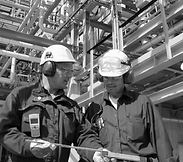Engineering and Technology Quarterly Reviews
ISSN 2622-9374




Published: 28 February 2024
Defining the Contextuality around Heritage Site to Maintain Cultural Sustainability
Nensi Golda Yuli, Febrianta Rahmat, Ilya Fadjar Maharika
Universitas Islam Indonesia

Download Full-Text Pdf
10.5281/zenodo.10723022
Pages: 1-9
Keywords: Contextuality, Relief of Borobudur Temple, Roof Style and Motifs, Cultural Sustainability
Abstract
Addressing pressing contextual issues related to settlements near world heritage sites is imperative. Preserving a settlement's unique identity and maintaining a sense of place and cultural sustainability in the area is crucial. This paper aims to explore the contextuality of Borobudur Temple and examine how the existing conditions support its contextuality. Our research focuses on the roof styles and motifs of the area, and we interpret contextuality through relief readings. To assess the contextual factors of the existing buildings along the Balaputeradewa corridor, we used matrix analysis and concluded how the context of recent buildings affects the area. Our findings indicate that variations in roof styles and motifs are crucial considerations for cultural sustainability. While some existing buildings reflect these findings, others are out of context. Moreover, some contexts in relief are outside the research area. These findings can be utilized to develop strategies for cultural sustainability in both rural and urban areas, especially in maintaining the area's sense of place.
References
Alliance, P. (2007). Sense of Place: Design Guidelines for New Construction in Historic Districts. Philadelphia: William Penn Foundation. Retrieved February 25, 2022, from http://www.preservationalliance.com/publications/SenseofPlace_final.pdf
Beamer, D., & Pidcock, C. (2005). Design in Context: guidelines for infill development in the historic environment. Australia: RAIA NSW Chapter. Retrieved May 12, 2021, from https://www.environment.nsw.gov.au/-/media/OEH/Corporate-Site/Documents/Heritage/design-in-context-guidelines-for-infill-development-historic-environment.pdf
Carmona, M. (2013). Public Places Urban Spaces: The Dimensions of Urban Design. New York: Taylor & Francis Group. Retrieved July 21, 2022, from https://www.taylorfrancis.com/books/mono/10.4324/9781315158457/public-places-urban-spaces-matthew-carmona
Cizgen. (2012). Rethinking The Role of Context and Contextualism in Architecture and Design. Gazimağusa, North Cyprus: Eastern Mediterranean University. Retrieved November 01, 2021, from http://i-rep.emu.edu.tr:8080/xmlui/bitstream/handle/11129/348/Cizgen.pdf?sequence=1
Dağlıoğlu, E. K. (2015). Reinterpreting the Contemporary Architectural Practice (in Turkey) in Light of the Context Debate. Architecture Anthology I: Education, Research, and Practice, 125-137.
Feisal, Z. (2019). Infill Design in Heritage Sites Study of Experts’ Preferences and Attitudes. Journal of Engineering and Applied Science, 451-463.
Gharebaglou, M., Ebrahimi, A. N., & Ardabilchi, I. (2019). Infill Architecture: An Interdisciplinary Approach to the Design of Historic Context. Case Study: Mashruteh Complex in the Historic Bazaar of Tabriz, Iran. Bagh-e Nazar, 16(76), 57-68. Retrieved May 17, 2021, from https://www.academia.edu/44470184/Infill_Architecture_An_Interdisciplinary_Approach_to_the_Design_of_Historic_Context_Case_Study_Mashruteh_Complex_in_the_Historic_Bazaar_of_Tabriz_Iran
Graham, H., Mason, R., & Newman, A. (2009). Literature Review: Historic Environment, Sense of Place, and Social Capital. Newcastle: International Centre for Cultural and Heritage Studies (ICCHS). Retrieved July 20, 2022, from https://eprints.soton.ac.uk/182155/1/Historic_Environment%252C_Sense_of_Place_and_Social_Capital_Lit_Review.pdf
Hardiati, E. S., & Priatmodjo, D. (2008). Vernacular Architecture on Mahakarmavibhangga reliefs of Chandi Borobudur. (pp. 1-11). Magelang: The National Research and Development Centre of Archaeology. Retrieved September 10, 2021, from https://www.academia.edu/10343024/Vernacular_Architecture_on_Mahakarmavibhangga_reliefs_of_Chandi_Borobudur
Hasbullah, R. A. (2021). Sense of Place Identification at High Density Housing. Case study: Kampung Pelangi 200, District Dago, Coblong, Bandung. (Identifikasi Sense of Place pada Permukiman Padat Penduduk (Studi kasus: Kampung Pelangi 200, Kelurahan Dago, Kecamatan Coblong). Bandung: Institute Teknologi Nasional. Retrieved July 21, 2022, from http://eprints.itenas.ac.id/1507/5/05%20Bab%202242016022.pdf
Hufford. (2003). Context. Urbana and Chicago: University of Illinois. Retrieved November 01, 2022, from https://www.sas.upenn.edu/folklore/faculty/mhufford/Context_EightWords.pdf
Lynch, K. (1960). The Image of The City. Cambridge: The MIT Press. Retrieved March 20, 2022, from https://www.miguelangelmartinez.net/IMG/pdf/1960_Kevin_Lynch_The_Image_of_The_City_book.pdf
Mirhallaj. (2016). Designing study centre of Guilan identification with contextualism approach in Rasht city. INTERNATIONAL JOURNAL OF HUMANITIES AND CULTURAL STUDIES ISSN 2356-5926, 1557-1565. Retrieved November 01, 2021, from https://drive.google.com/file/d/1KM2ub0mFbu9YECyhOLnfxDIBrWjm5BuH/view?usp=sharing
Mutfianti, R. D., & Soemardiono, B. (2009). The Concept of corridor layout at Kalimas Surabaya based on spirit of place. (Konsep Penataan Koridor Kalimas Surabaya Berdasarkan Potensi Roh Lokasi). Jurnal IPTEK, 42-51.
Ostanevics, M. (2017). Infill development in context: Case Study of Riga Circus extension.Umea: Umea School of Architecture. Retrieved Juni 21, 2020, from http://www.diva-portal.org/smash/get/diva2:1137414/FULLTEXT01.pdf
Oxford Dictionary, E. (2021, April 15). Oxford Learners Dictionary. Retrieved from Dictionaries: https://www.oxfordlearnersdictionaries.com/definition/english/context?q=context
Sanghvi, N. (2017). Context in Architecture. International Journal on Emerging Technologies, 76-79.
Shamai, S. (1992). Sense of place: an empirical measurement. Geoforum, 347-358. Retrieved July 21, 2022, from https://www.sciencedirect.com/science/article/abs/pii/001671859190017K
Sotoudeh, H., & Abdullah, W. M. (2012). Affected Variables on Successful Infill Design in Urban Historic Context. Arts and Design Studies, 7-13
Zhou, S., & Zhang, S. (2015). Contextualism and Sustainability: A Community Renewal in Old City of Beijing. sustainability, 7, 747-766. Retrieved November 01, 2021, from https://www.researchgate.net/publication/271723767_Contextualism_and_Sustainability_A_Community_Renewal_in_Old_City_of_Beijing



